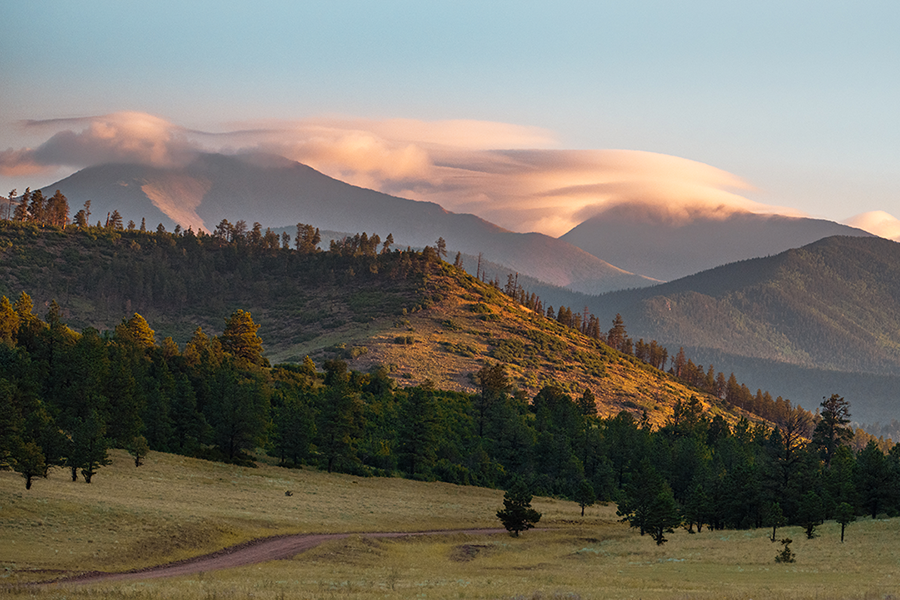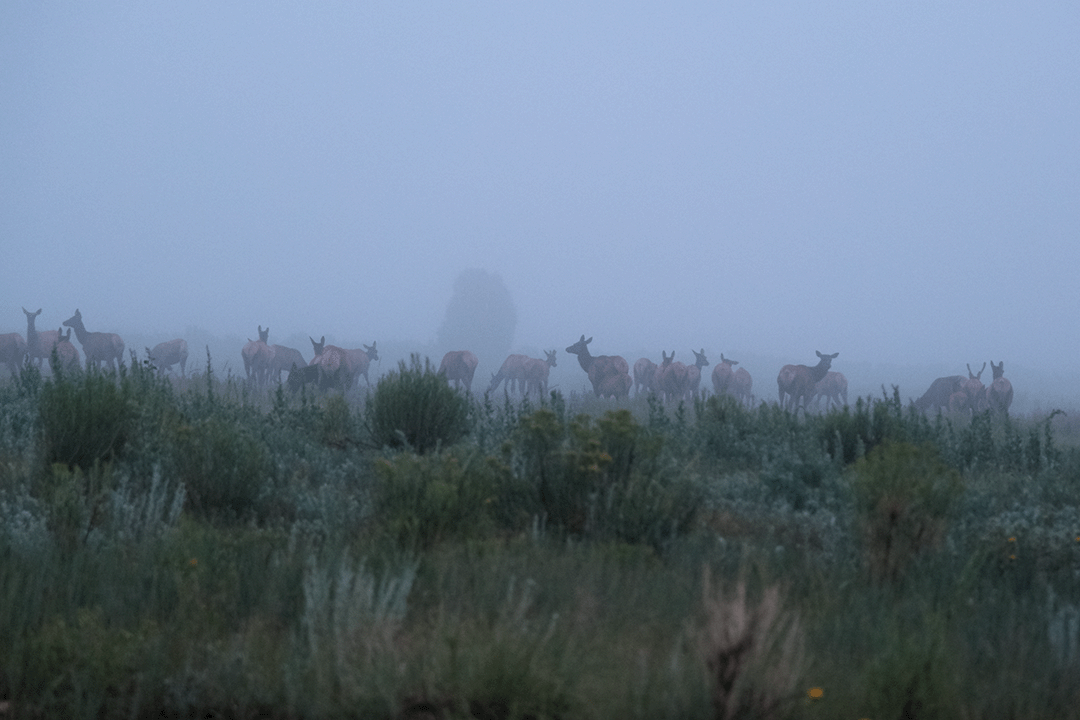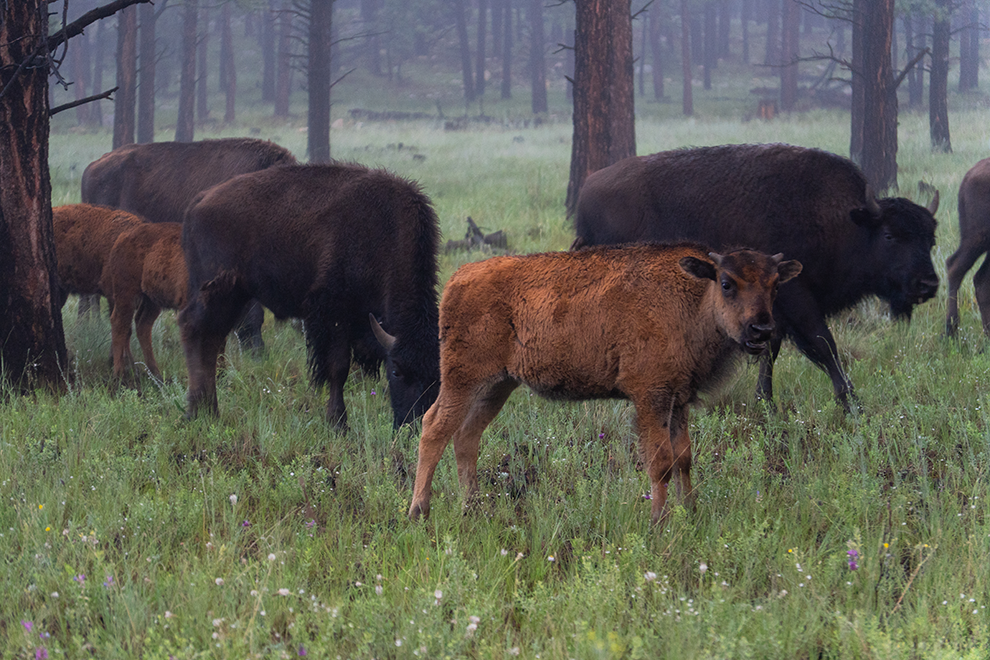The skies over the Northern New Mexico landscape were still draped in darkness at 5:30 a.m. when George Washington University photojournalism senior Andrew McCabe and Nicholas Aguirre Zafiro, a recent graduate with a B.A. in political communication, climbed into pick-up trucks—their gear in tow and coffee and breakfast burritos in hand.
Within minutes, their trucks rumbled through a thick fog into grassy fields. By the time the sun crested over the surrounding mountains, a herd of grazing bison crossed their tracks.
The students jumped from the vehicle and pulled their equipment from the truck bed—not tents and sleeping bags but cameras, tripods and a drone.
The day’s adventure had begun.
Welcome to the Vermejo Ranch, 550,000 acres of pristine wilderness near the Colorado border. It’s an environmental tapestry of pinyon-juniper woodlands and grazing wildlife from elk to black bears to mountain lions. The ranch is maintained by the Ted Turner Reserves, an initiative pioneered by the CNN founder to promote conservation and ecological stewardship of more than one million acres of wilderness properties.
For McCabe and Zafiro, Vermejo was a classroom and canvas for three days in July where they joined other participants in a storytelling expedition. The group took part in an intensive experiential learning laboratory that was sponsored through a partnership between the Turner Reserves and Planet Forward, the environmental journalism project hosted by the School of Media and Public Affairs (SMPA) at the Columbian College of Arts and Sciences. The group hiked the vast expanses—from shortgrass prairies to meandering creeks surrounded by alpine peaks—and worked to produce 90-second videos that highlighted the reserve’s conservation efforts. Their topics include riparian ecosystem preservation, bison management and campaigns to reintroduce cutthroat trout to miles of waterways.
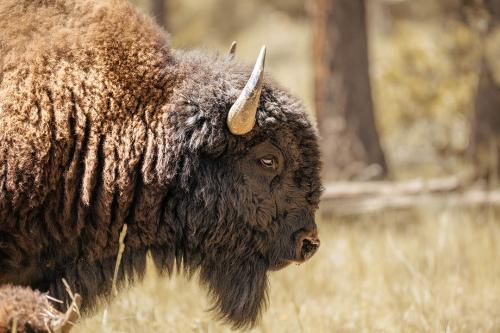
“Environmentalism is the fight of our time,” said McCabe, a photojournalism and business double major who plans to pursue a career in environmental photography. “I want to tell the kind of stories that inspire people to make changes in their own life that better impact the environment.”
The reserve partnership stems from Planet Forward Founding Director Frank Sesno’s long-time association with Turner and his family. Before joining the faculty at SMPA, Sesno spent two decades as a CNN White House correspondent, anchor and Washington bureau chief. Through the SMPA Ted Turner Endowment, Sesno has spotlighted Turner’s environmental activism. The fund established a Ted Turner Professorship of Environmental Media—currently held by science journalist and video producer Eli Kintisch—and supports events and activities including an annual Ted Turner Lecture to highlight creative, entrepreneurial storytelling.
Through the Turner Reserves relationship, which began in 2022 at Turner’s McGinley Ranch in Nebraska, participants from schools across the country hone their multimedia storytelling skills in an ecologically rich setting.
“We are honoring Ted’s work, legacy and passion for the planet by taking students to see the splendor that Ted loves,” Sesno said. “They learn videography, drone technology, photography, audio to tell the story of wide-open conserved spaces.”
Along with exploring the landscape, the group spoke with the reserve’s conservation experts and scientists and attended environmental journalism lessons like a Sesno-led seminar on interviewing techniques. Their videos are “a science communication explainer,” said Planet Forward Multimedia Producer Aaron Dye, who programmed the trip’s educational experience. The brief segments target platforms like Instagram and TikTok that reach student peer groups. “We want to build an audience for environmentalism while introducing students to environmental communications as a viable career path,” Dye said.
Energizing interactions
As a New Mexico native, Zafiro, a first-generation college student, was eager to celebrate the natural diversity of his home state. “I love to show people that New Mexico is not just a desert. It is beautiful, lush and green too,” he said.

His video project focuses on the lakes, streams and rivers that make up Vermejo’s riparian network. Interviewing the site’s water conservation staff, he not only explains the efforts to beat back threats like sediment erosion and deer grazing on river banks, but also stresses the region’s cultural significance and Indigenous heritage.
“I realized the importance of balance,” Zafiro said. “Balancing the needs of the fauna, the wildlife, the insects, the communities themselves. That balance helps solve a lot of issues.”
McCabe, a member of the GW Men’s Track team, still fit in a daily run at Vermejo, despite heavy afternoon rain falls and trails rising over 8,000 feet in altitude. His video follows the efforts to manage the bison herd population through sustainable land use.
“The bison story in Vermejo is really about informing humane livestock practices,” he said. “They are showing that [meat production] doesn’t have to be an insane detriment to the environment, and it doesn’t have to be unethical. You can do it in an environmentally conscious, sustainable way.”
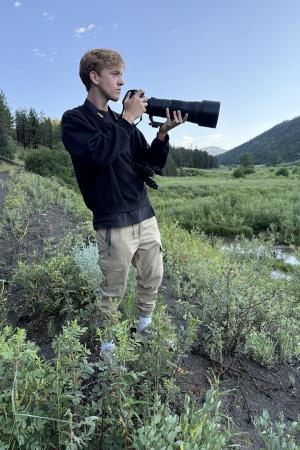
For both McCabe and Zafiro, many of the most profound lessons came from people as much as the wilderness. Joining students from Middlebury College, Howard University and the SUNY College of Environmental Science and Forestry in Syracuse, N.Y., they compared notes and shot background footage for each other’s videos. “Those interactions are energizing,” Sesno said. “It makes [them] hopeful when they realize there’s a lot of brain power and creative energy being directed at the things they all care about.”
Likewise, the crew came away with a deep appreciation for the reserve’s conservationists and staff who introduced them to forest management programs. “Sometimes when I think about climate and the environment, I tend to get down and feel it’s hopeless,” McCabe said. “But when you meet these people who dedicate their entire lives to fighting the good fight, it inspires you to fight along with them.”
As they packed up their cameras and drone equipment, both McCabe and Zafiro said the experience left them yearning for more time in Vermejo’s wild expanse. “The trip was so short—the hardest part was leaving,” McCabe said. “There are so many more stories to be told.”
The project’s final videos will be published on the Planet Forward website.


